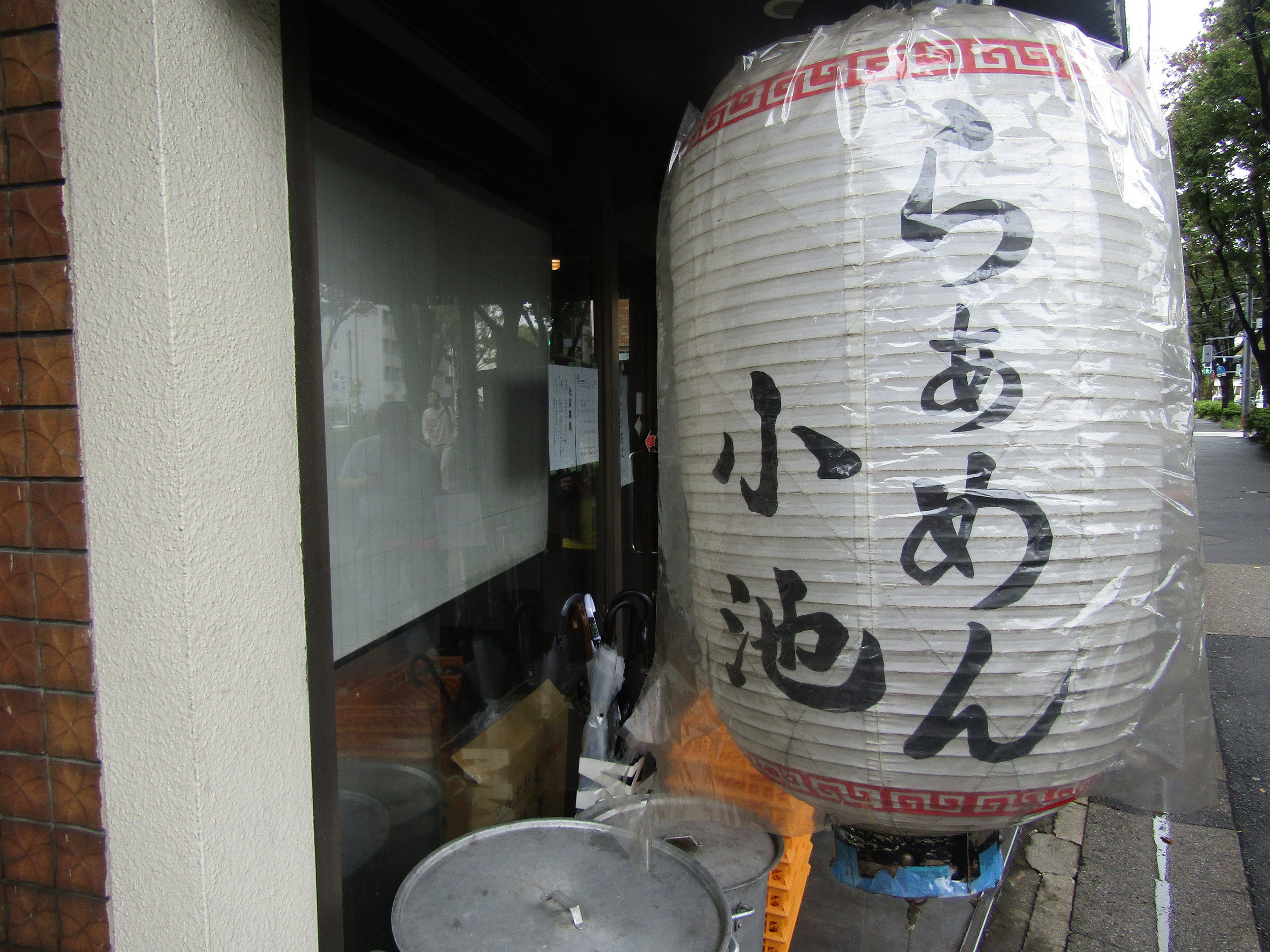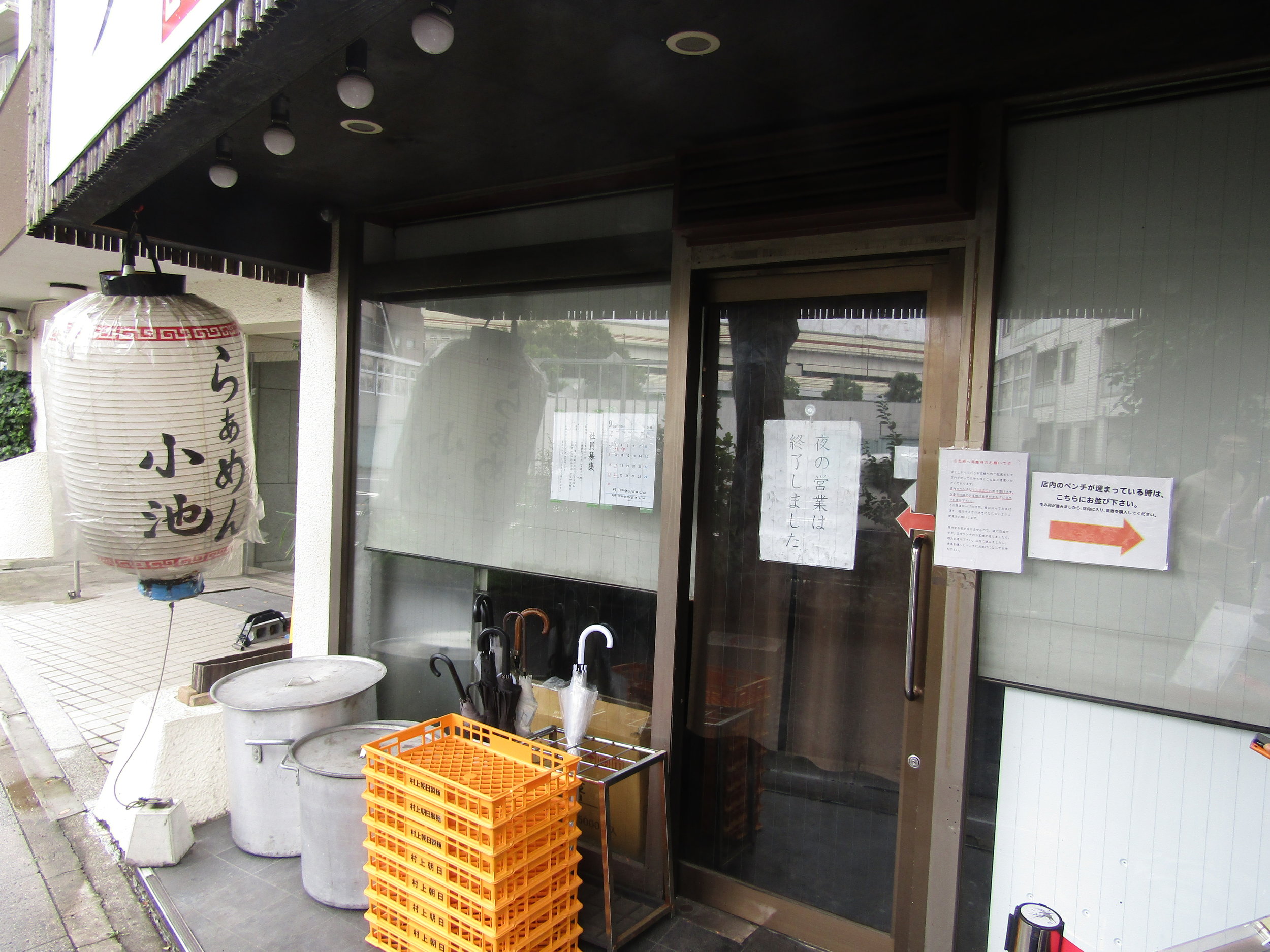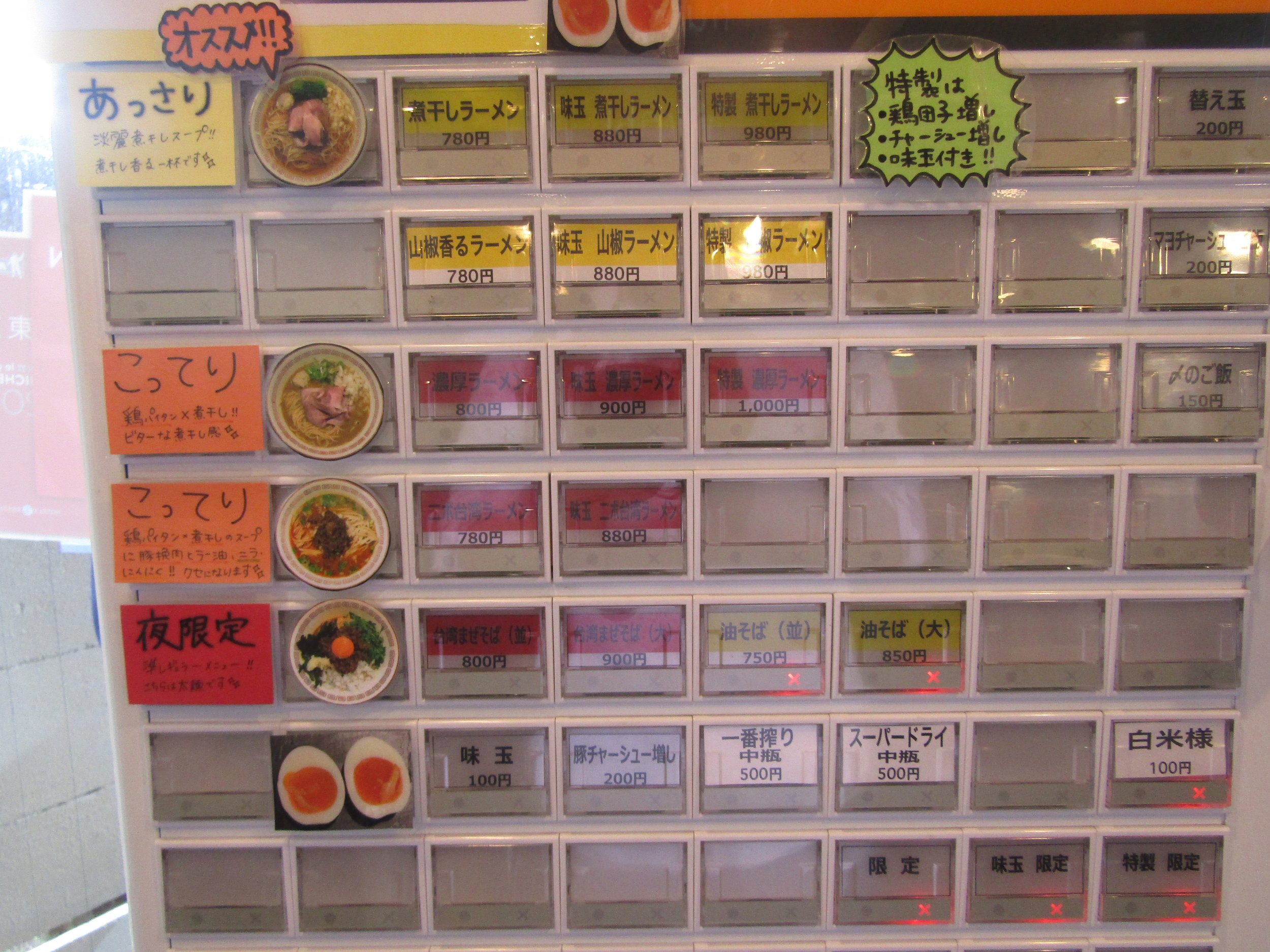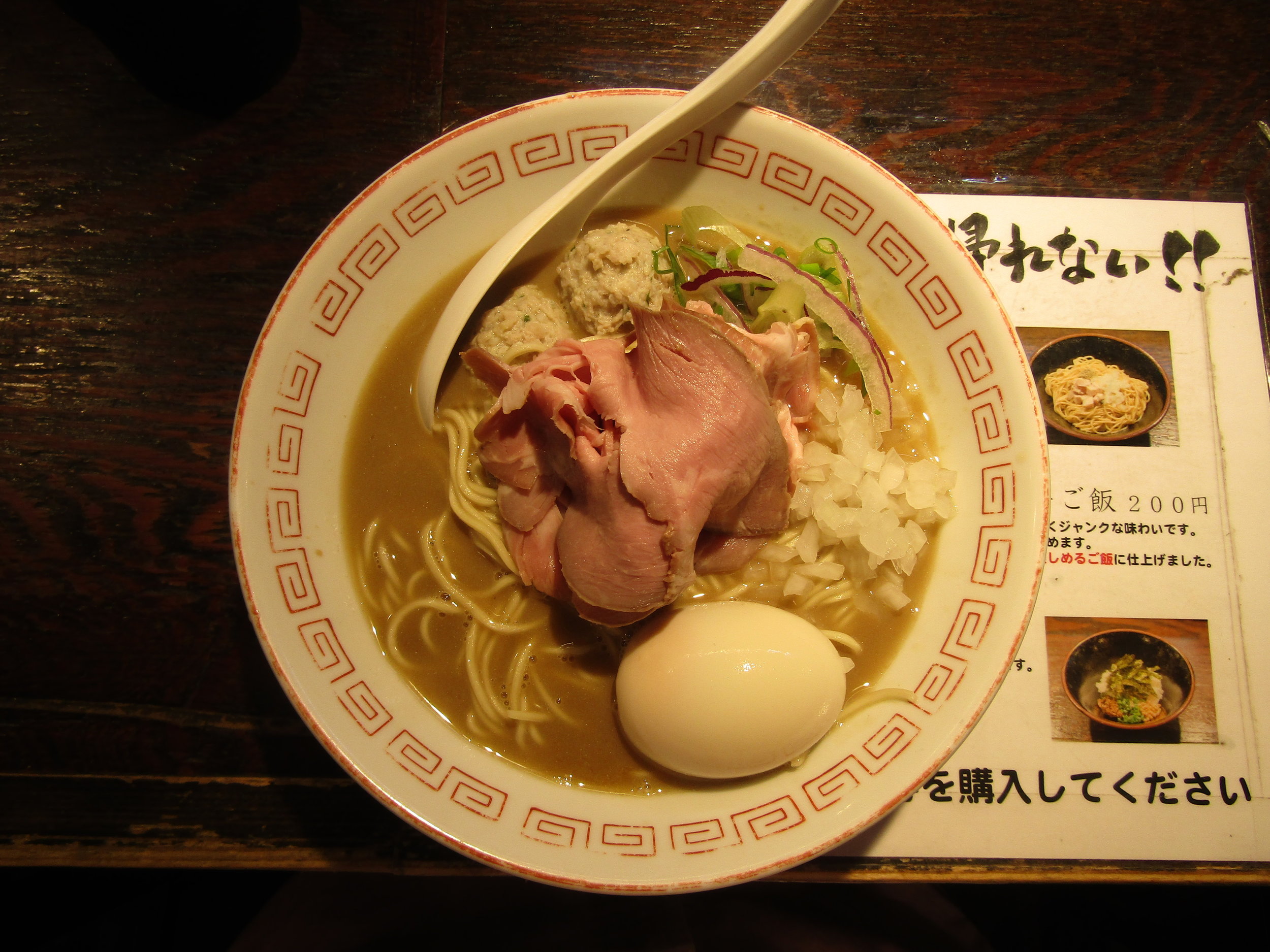Ramen Koike (らぁめん小池); Thick and Rich Ramen, Kamikitazawa
The other day I was having a conversation with a friend from high school (shout out to AC) who mentioned that he follows my instagram and blog and we got in to discussing what our favorite ramen shops in Tokyo were. I was a bit taken aback when he answered Ramen Koike and even he was a bit excited when I told him I have gone a couple of times. Now, he and I weren’t surprised as if Koike was a bad choice, but rather amazed that we both knew of the shop in general. Although Koike has already been mentioned in the Michelin Guide as a recommended ramen shop in Tokyo, its location outside central Tokyo left it unnoticed by a lot of the foreign ramen eating community. Again, this is widely just us, as internationals, living in Tokyo, surprised that we knew of Ramen Koike as it is an immensely popular shop among Japanese ramen enthusiasts. So while you may not run in to a lot of tourists coming to Koike, you can expect some long lines when you arrive. Anyways, after having had this conversation, I realized I had yet to write a review on Koike and I could help spread its amazing ramen to my starving readers. So here is my long overdue review of one of my favorite ramen shops in the outskirts of Tokyo, Ramen Koike. Hopefully you find yourself feeling adventurous and roam outside of central Tokyo to give this amazing ramen restaurant a try.
So Ramen Koike is located just a short walk from Kamikitazawa station on the Keio Line, just ten minutes from Shinjuku station. Get out of the station on the north exit and head towards the main street. You’ll start seeing the line of people as soon as you get to the main highway its located on. Koike is popular for two main ramen, but they have four to choose from (if you decide to go for dinner). One is a light, Niboshi ramen (yellow) and the other two are thicker more dense options (orange). The last option is a Maze soba, or no soup ramen (orange), and is limited for dinner hours only. For the first Niboshi ramen, you have the option of adding Sansho which is a spicy Japanese ground peppercorn spice (second row). The first rich ramen option is the Noukou Ramen, which is their rendition of a Toripaitan (thick, chicken base soup ramen). The second rich ramen option is the Niboshi Taiwan Ramen which is a spicy version of their Noukou Ramen. I admittedly have never had this version so I will update this review when I do.
For each ramen variety you can choose from regular, with egg, or Tokusei (extra toppings). Side menu items of eggs, char siu, beer, extra noodles, and a rice bowl are also available. The restaurant recommends the extra noodles as there is a way to enjoy your ramen in a variety of ways by ordering the extra noodles. I, too, recommend ordering the extra noodles.
As always I started off with the rice bowl. No need to save any soup for this rice bowl as its loaded with flavor so I dug in as soon as it arrived. It consists of rice topped with chopped roast pork char siu, spicy onions, dried seaweed, and a nice dressing of mayo. I have to say, this is the junkiest rice bowl I have had, but it was oh so delicious. Just by looking at it, you can probably tell its not healthy for you, but it packs a nice flavor punch of spicy, fatty, sweet, and savory making it difficult to put down. The Japanese mayo has the sweet and tangy aspect which pairs really well with the savory roast pork. The spicy onion mix adds a nice refreshing crunch to balance a bit of the fattiness and all three combined to make a great compliment to the hot rice beneath it. If you come with an appetite, definitely grab a bowl (200 yen), but I don’t think it’s a must get. Remember, the extra noodles are also coming (granted you followed my recommendation) so you’ll definitely have plenty of food. I’ll leave it up to you, but I will say, I did not regret ordering this rice bowl.
Following my rice bowl was my Noukou Ramen. Again, the Noukou ramen is a Toripaitan which is a ramen broth style where chicken fat and bones are simmered on high heat continuously until the fats, collagen and umami break down in to a ridiculously flavorful and thick soup. At Koike, their ramen is topped with some diced onions, sliced red onions, chicken meatballs, thinly sliced char siu and a bit of green onions. I opted to get the marinated egg option which is pictured. The flavor of this ramen is phenomenal to say the least. Koike is definitely in my top 5 of toripaitan ramen in Tokyo (list coming soon!). The soup has a rich fatty flavor from the skin and fat, but a deep flavor from the chicken carcass. The soup is a bit thick, but not as much as other paitan ramen in Tokyo. Its a nice balance of having thickness from the deep simmer, but keeping it thin enough thats its still a soup you can enjoy without needing noodles or rice. You probably don’t want to drink too much of the soup by itself anyways as you’ll want to save some for your extra noodles that’s coming soon (if you followed mine and the chef’s recommendation and ordered it). The chicken meatballs is a nice refreshing flavor change that doesn’t overpower the soup, but rather compliments it. There’s a bit of lemony zest in the meatballs to help cut through the dense soup flavor. All of the toppings actually help do that as the onions add a tangy freshness which counteracts the soup and the roast pork slices are light in flavor soaking up the flavor of the soup rather than adding a new element. The thin noodles work well to cling in to a nice amount of soup without making it feel like too much noodles per bite.
After I was done with my noodles, my extra noodles arrived. What makes their extra noodles special is their addition of a sauce and fish powder added. The owner recommends mixing the noodles first and having a bite without putting it in the soup first. I recommend the same as it has a nice flavor change to the ramen and allows you a variety of ways to enjoy the bowl. Next, add a bit of vinegar and have a bite. The acidity of the vinegar creates a nice bite and tanginess that is vastly different from an experience you would have from just having the ramen by itself. After taking a couple bites, mix the rest of your noodles back in to your bowl and try it with the soup. The combination of the fish powder and vinegar really cuts through the rich fattiness of the soup and create an incredibly different, but delicious ramen.
After having their toripaitan on my first visit, I had to come back to try their Niboshi ramen and to provide a review for this variety for you all as well. For me, the toripaitan was definitely the best of the two, but I thoroughly enjoyed the light refreshing flavor of the Niboshi ramen. Rather than a thick, dense broth, the niboshi is quite airy, and won’t have you feeling heavy and stuffed when you’re done. As you can see from the picture, the soup is quite clear and has a nice tint from the niboshi fish. There is quite a lot of umami pulled from the niboshi and the tare making the soup quite savory and addicting. There is no bitter fishy aftertaste and is a nice clean and flavorful soup. The blanched mustard leaves were a nice swap from the red onions in the toripaitan as this bowl needed a bit of the bitterness of the mustard leaves to counterbalance the savoriness of the soup. I know both the toripaitan and niboshi ramen have a popular fan base and each are on opposite sides of a ramen flavor profile so it can be a nice debate comparing the two. I enjoy both varieties, so I don’t have a vested interest in either since I don’t have a preference, but I think the quality of the toripaitan is far and beyond better than any from other restaurants, while this Niboshi ramen is quite similar to other top niboshi ramen restaurants in Tokyo. This isn’t a knock on the niboshi as it has stiff competition from other ramen restaurants, but if you have gone to other niboshi restaurants, you might feel like they were on the same level. I’ll leave it to you to decide which to order on your visit as its almost like comparing clam chowder to chicken noodle soup. Just pick the one you prefer!
While the restaurant is a bit further away from central Tokyo, I definitely believe its worth a trek just for the toripaitan itself. The restaurant has been a regular on the Michelin Guide recommended section for a number of years now, so if you’re looking to cross off some bowls from the list, you’ll definitely enjoy coming here.







